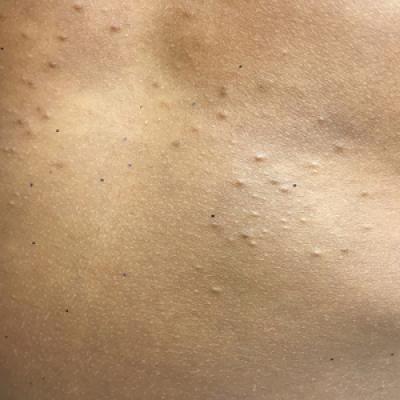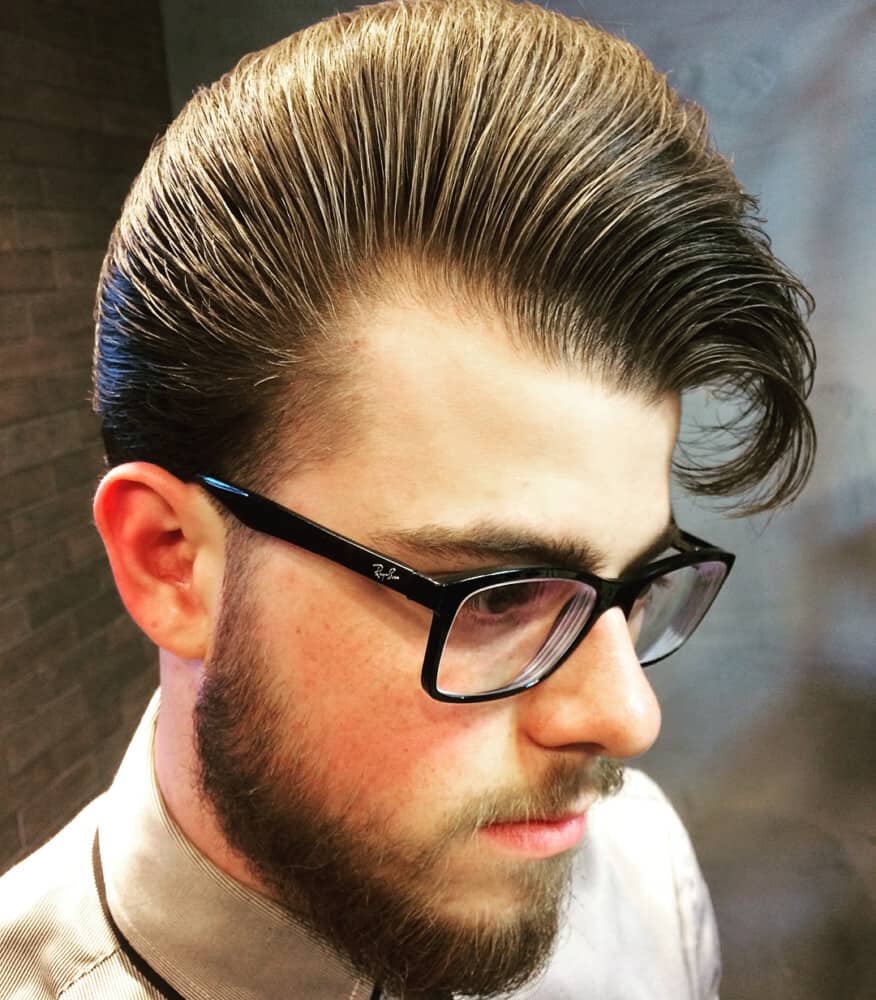
Eruptive Vellus hair Cysts (EVHCs) are developmental abnormalities of the vellus hair follicle. They appear as multiple smooth, nonsymptomatic papules with skin-colored surfaces. These bumps can be grouped or disseminated symmetrically over the affected area. EVHCs are rare benign tumors of the pilosebaceous unit and often appear during childhood or adolescence. They are sometimes associated with pachyonychia congenital type 2 and can have a familial origin. Mutations in genes encoding keratin 17 may contribute to their production.
Diagnosis:
EVHCs are a rare developmental abnormality that most commonly occurs among adolescents and young adults. They manifest as yellow to reddish-brown papules over the chest, arms, and abdomen. They can occur randomly or be passed down autosomally dominant. Abnormalities at the vellus hair follicle’s infundibular level lead to hair retention and cystic dilatation with secondary hair bulb atrophy. EVHC can typically be diagnosed through clinical examination. Histologically, it appears as a cystic lesion lined by stratified squamous epithelium and filled with loose lamellated keratin with multiple vellus hairs in its lumen. Histological examination using a 10% potassium hydroxide solution proves EVHC. The presence of vellus hairs within its cystic cavity differentiates it from other conditions, such as steatocystoma multiplex or chronic folliculitis.
Symptoms:
Eruptive Vellus Hair Cysts typically present as 1-7mm symmetrical, monomorphous skin-colored bumps that can form groups or be scattered. They can affect any location, including the chest, abdomen, and upper extremities. Histopathologically, they contain laminated keratin along with multiple vellus hairs. They are commonly mistaken for steatocystoma multiplex (SCM) due to their similar clinical morphology and distribution patterns. Under dermoscopy, EVHC distinguishes itself from SCM by the absence of sebaceous glands in its cyst wall.
Treatment:
There is no definitive treatment for eruptive vellus hair cysts, although many resolve independently. Temporary relief can be provided through derma abrasion and fine needle evacuation. Topical 0.05% retinoic acid cream and oral isotretinoin may also be utilized, but their success rates still need to be proven, and they often result in adverse side effects. EVHC lesions were first described in 1977 by Esterly and colleagues. They can be found on various body parts, including the face, axillae, buttocks, and genital areas.
Prevention:
Eruptive Vellus hair Cysts typically appear as small, smooth, dome-shaped papules on the chest and extremities. Sometimes, these cysts become umbilicated and take on a scaly or crusty appearance. The exact cause of EVHCs is unknown, but it is theorized that occlusion of an infundibulum leads to retained hairs and subsequent cystic dilatation. There are also theories suggesting that EVHCs develop as developmental abnormalities with autosomal dominant inheritance. EVHC differs from Steatocystoma Multiplex in terms of both its cause and inheritance pattern. However, they share similar clinical features, including age of onset, location of lesions, symptoms, and histology.

